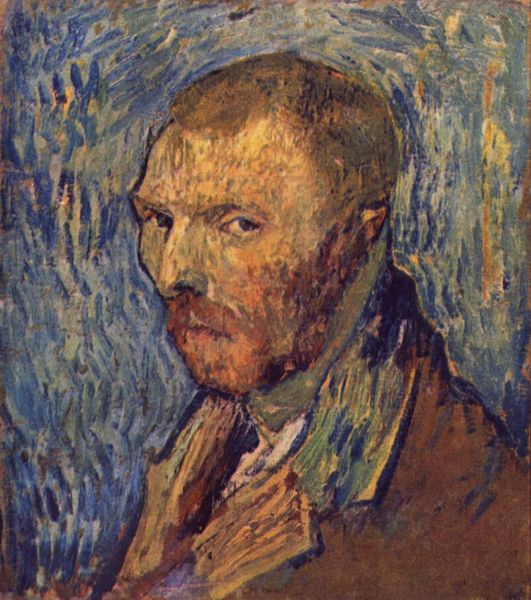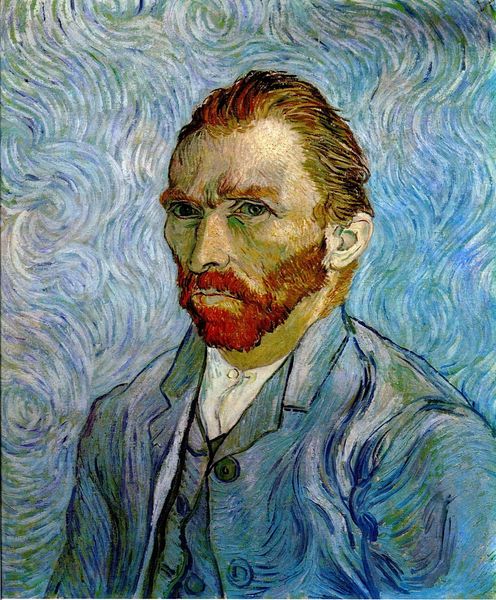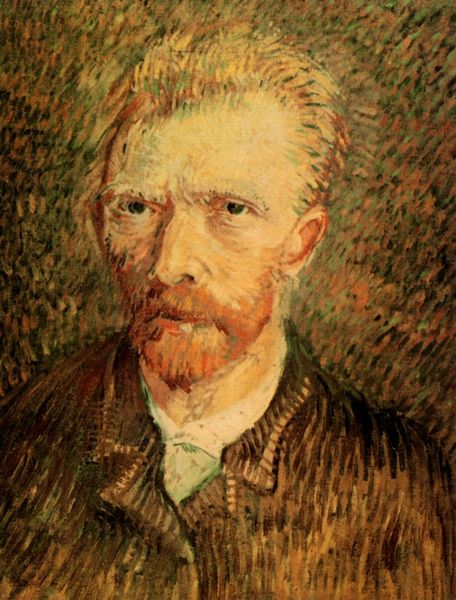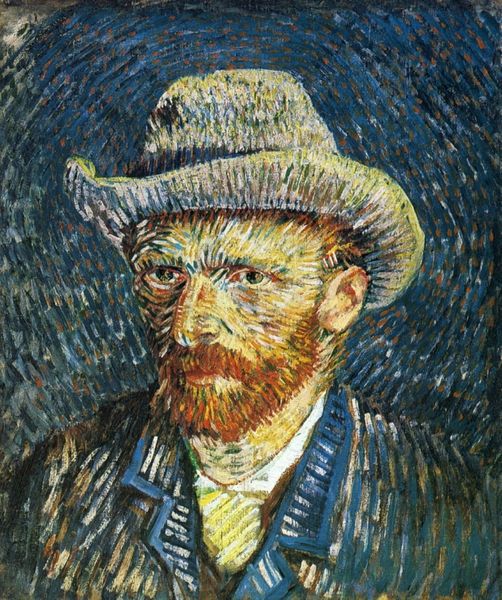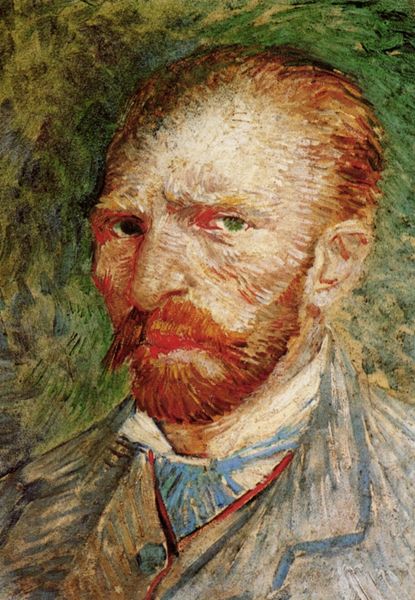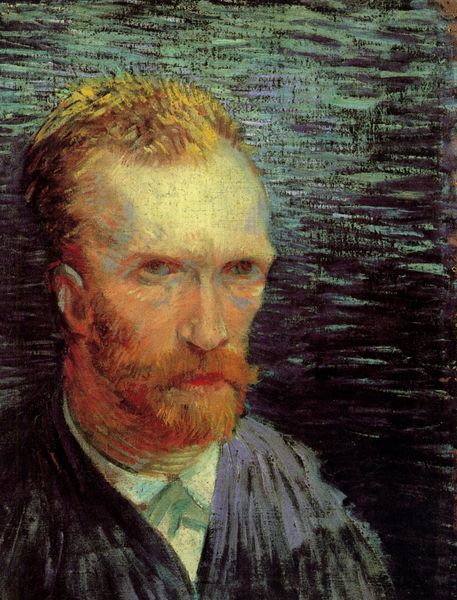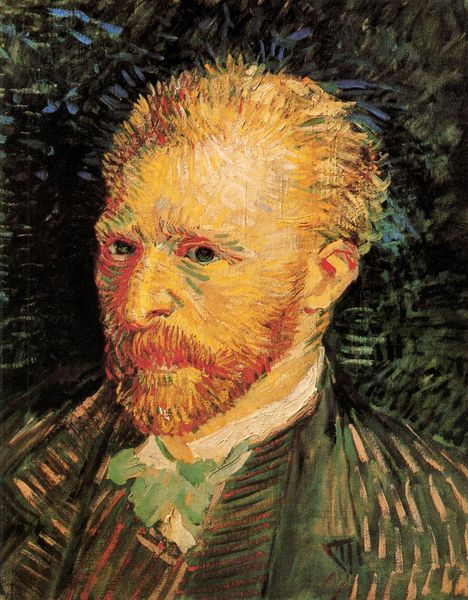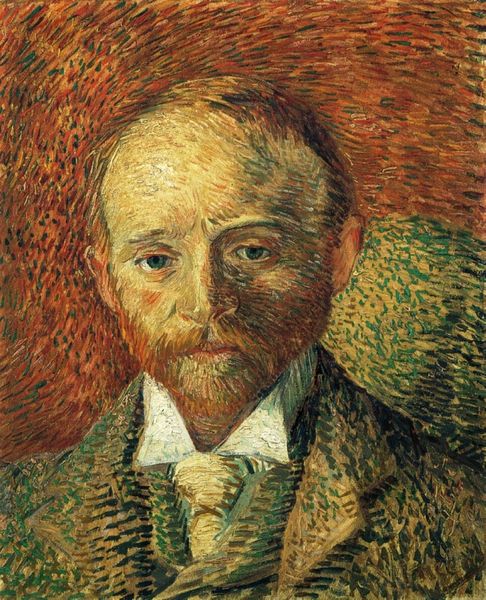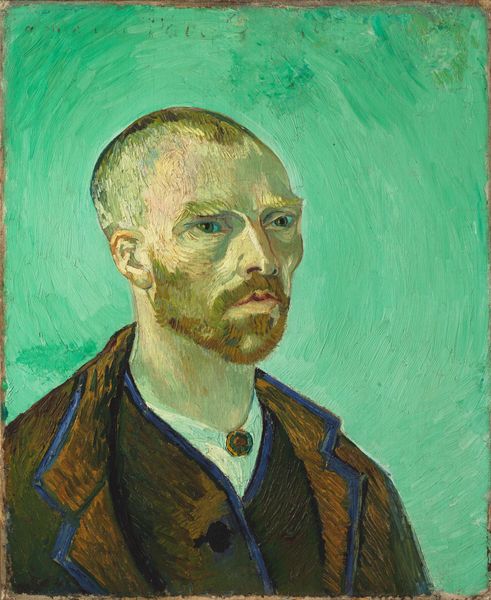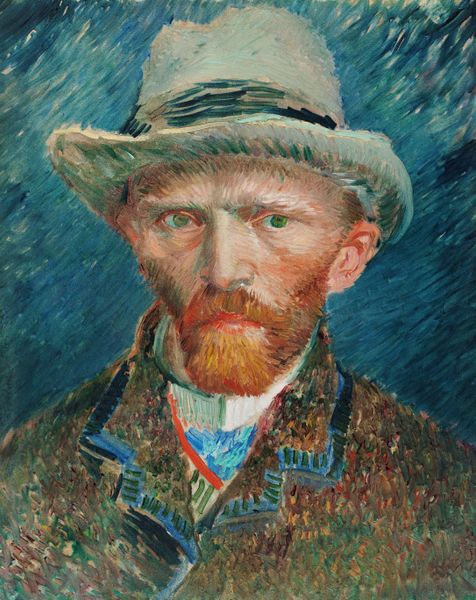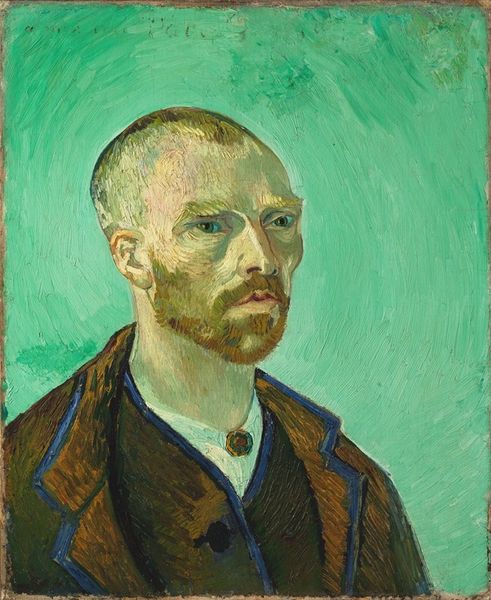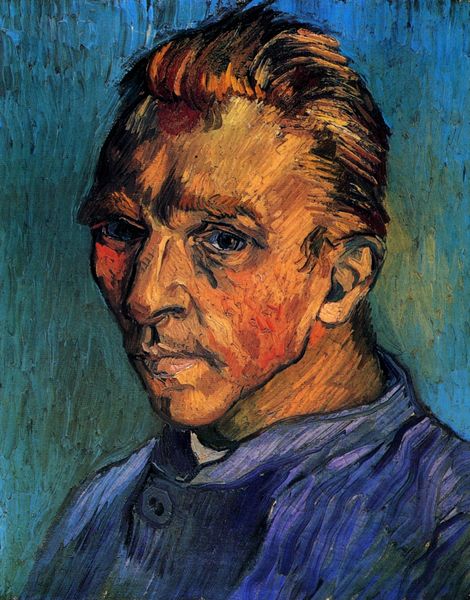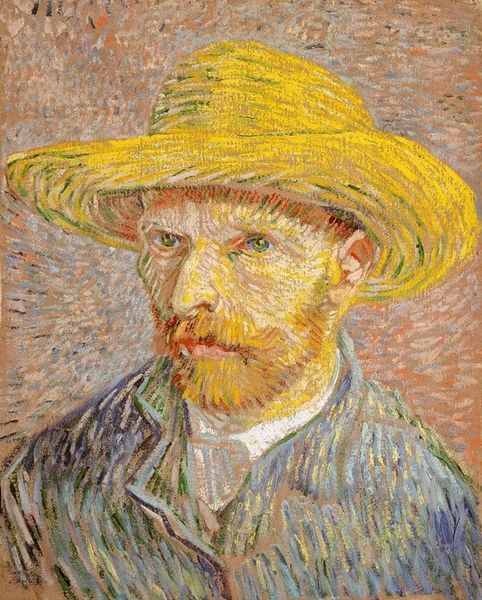
painting, oil-paint
#
portrait
#
self-portrait
#
painting
#
impressionism
#
oil-paint
#
oil painting
#
vanitas
#
male-portraits
#
post-impressionism
Dimensions: 57 x 43.5 cm
Copyright: Public domain
Editor: Here we have Van Gogh’s "Self-Portrait with Palette," created in 1889 using oil paint. It’s striking how the swirling brushstrokes in the background contrast with the relative stillness of his face. What's your perspective on this work? Curator: It's important to understand the context. Van Gogh painted this while at the Saint-Paul-de-Mausole asylum. Knowing that, do you see how the painting reflects not just his artistic practice, but also the social constraints he faced? Editor: I guess I hadn’t really considered the asylum's influence beyond his mental state. How might the asylum environment have affected his artistic choices and portrayal of himself? Curator: Think about it. He's depicting himself as a painter, but to whom is he presenting this image? Was it for the art world that largely ignored him? Or was it perhaps for himself, to reaffirm his identity and purpose in a place that sought to strip him of both? The controlled pose against the energetic background is interesting, isn’t it? Editor: That makes me rethink the whole thing. Maybe it's not just about his artistic identity, but about actively constructing that identity within a limiting social structure. Curator: Exactly. This wasn't simply a portrait; it was a statement, made within very particular circumstances. It shows art not as a solitary activity but embedded within social and political realities. Editor: I never considered how deeply his environment influenced the message of the self-portrait. Curator: It reveals so much when you view it that way, doesn't it? It shows us the role institutions play in shaping artistic expression, whether we’re conscious of it or not.
Comments
No comments
Be the first to comment and join the conversation on the ultimate creative platform.
